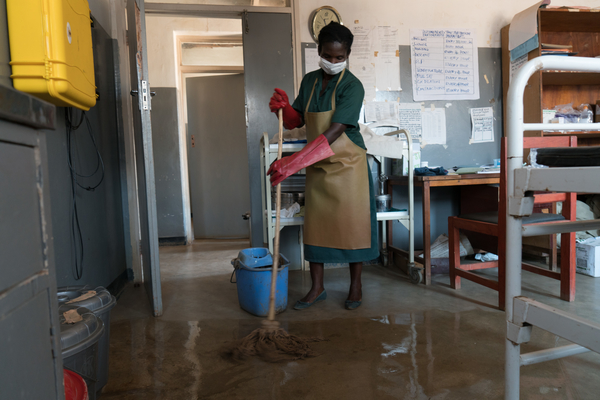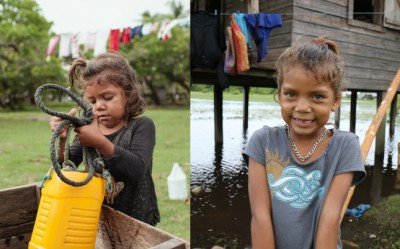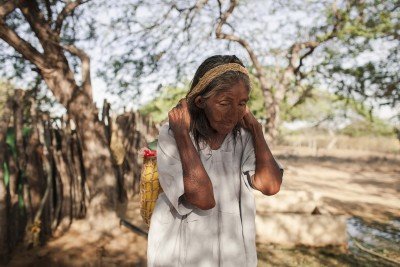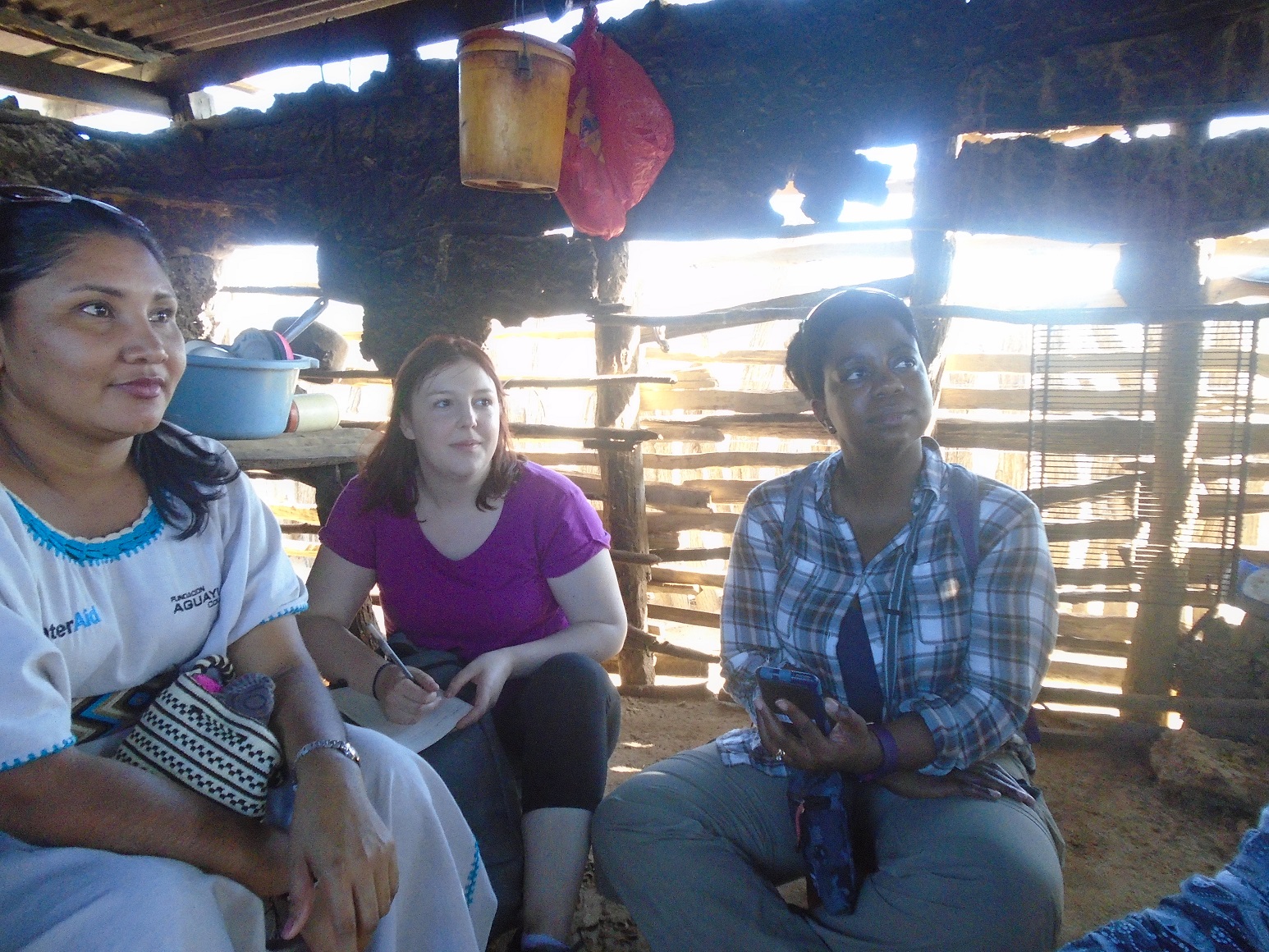Gloria Mkukawa

Gloria Mkukawa, 43, has worked for the Ntosa Health Centre for a remarkable 23 years. However, the center’s conditions are not so remarkable. In its 30 years of operation, the hospital has experienced staff shortages, it currently has no running water and it has dilapidated bathrooms and toilets with heaps of defecation and blood water. Mkukawa’s primary job is to clean the maternity ward, but she often delivers babies as well. Ntosa Health Centre is among the 75 percent of Malawian hospitals that don’t have running water. WaterAid hopes to address the various sanitation and hygiene challenges the facility is currently facing.
Curator’s note: The following is an excerpt of Gloria Mkukawa’s story as told to WaterAid staff on September 2016.
As a ward attendant, Gloria Mkukawa explains that her daily duties entail sweeping, mopping, cleaning after the patients, but also attending to their needs. As she continues to share her job description she says, “I also assist the nurse in the delivery room”.
While this surprises me, I am not as shocked as I should because of the challenging reality that faces the health centre. Ntosa Health Centre was opened in 1986 and caters for a population of 14,971 people with an average of between 30 and 35 deliveries per month. In the 30 years of its existence, the hospital has forever been faced with staff shortages having just one nurse midwife, a medical officer and hospital attendants to cater for all the incoming cases at a time. This is coupled with the absence of running water.
The two toilets and a shower within the hospital meant for pregnant women and mothers are non-functional, thereby forcing women who just delivered to drip their way to the dilapidated bathroom outside the ward which is some 100 metres away.
Brenda Zungulira, 21, testifies that during her pregnancy, her guardian had to go to a nearby school where the whole village gets its water. The hospital itself does not have running water. The bathrooms are very unhygienic and most pregnant women clean themselves near the entrance of the bathrooms, as the facility is not good for use.
Likewise, Judith Moffat, a 23-year old, added that during her stay at the labour ward, a lot of pregnant women had to queue for a single toilet before the new one was constructed. The dire situation prompted others to help themselves in a nearby bush, which was a terrible sight to see. Moffat bemoaned that the hospital is supposed to be a clean place where most pregnant women are supposed to have hygienic facilities.
Over the years, Mkukawa has helped nurses who have come and gone at the hospital. She has been paying keen interest during deliveries until one day when there was no one else to help a woman deliver [her baby] but her.
“I have three children and I know how scary it can be once you are in labour,” she said. “One morning, I went to the labour room to clean it up and I found a lady on the floor, screaming. The baby was already on the way, I could see the head. There was no time to go call the nurse. I helped deliver the baby and it was a bouncy baby boy. That was it. That was the day I started making deliveries. I cannot recall how many I have done but there have been lots. The lady in the ward right now, I delivered her baby.”
After women deliver, whether assisted by others or Mkukawa herself, it is her responsibility to clean the maternity ward. The 43-year-old woman shares that this is no easy chore. Ntosa Health Centre collects its water from a nearby school borehole, which is also the main water point for the community. Mkukawa and other hospital attendants have to make at least five trips just to make sure that there is enough water for patients and hospital use.
At the borehole, guardians or hospital staff is not given priority. It is first-come-first-serve etiquette no matter the emergency or the urgency of the need of water at the hospital. According to the nurse-midwife Wezzie Kayuni, this is because the community and school got tired of their emergency stories.
“At first they would let us draw the water first but it meant they had to wait a long time because our needs are never ending,” Kayuni said. “So now it is on first-come-first-serve basis. You can imagine what impact this is on our work.”
The 31-year-old nurse-midwife who has been at Ntosa since 2013, says the absence of running water and unhygienic bathrooms means that [methods] of infection prevention are not fully being adhered to. This puts the lives of mothers, babies, and children including the staff at risk.
“The need for portable water within the hospital cannot be over emphasized,” she said. “Starting from antenatal, we need to wash our hands after seeing each client but this is something we do not practice. Coming to the delivery room, the instruments we use need to be soaked in diluted chlorine, then soapy water and finally clean water.”
In addition, soft linen also needs to be soaked in water, Kayuni said. She added most women do not thoroughly clean themselves after delivery because they have very little water to work with.
The case of Ntosa Health Centre is not an isolated one. According to a WHO/UNICEF Joint Monitoring Programme report of 2015, only 25 percent of health facilities in Malawi meet the standard of having running water, eight percent of health facilities do not have toilets and 54 percent do not have waste receptacles.
Photo credit: WaterAid/Dennis Lupenga






